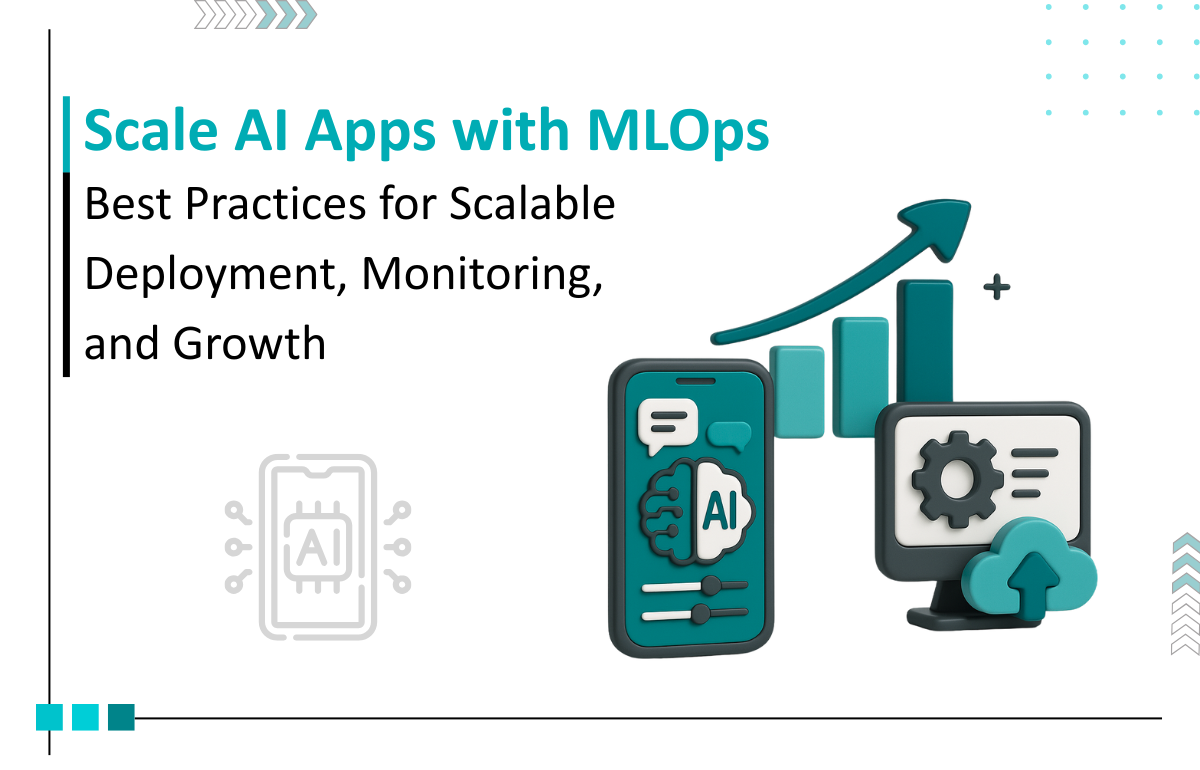
Building an AI prototype is an amazing accomplishment - your idea works! But turning your prototype into something enterprise-ready is an entirely different challenge. There are numerous issues with performance, stability, security, integration, and compliance that have to be resolved in scaling the AI application in a way that the outcomes of the AI models are still accurate and appropriate.
In this post, we will outline the critical steps, challenges, and best practices for scaling your AI application into a stable enterprise-grade application.
Before scaling, assess how your prototype performs under limited conditions.
Use tools like MLflow, Weights & Biases, or TensorBoard to benchmark and track performance over iterations.
Prototype code is often exploratory and lacks modularity. Scaling demands clean, efficient, and maintainable architecture.
A scalable artificial intelligence pipeline needs a streamlined, automated, and consistent set of data.
Automate retraining pipelines to adapt to new data and avoid model drift. Efficient AI data integration ensures consistency across training and inference workflows, helping avoid misalignment between raw inputs and model expectations.
Once your application is stable, you will want to focus on a robust model deployment for large groups of users. Choosing the appropriate deployment mechanism will be important to deliver reliability, limiting risks, while allowing user feedback and product or model improvements.
Effective machine learning model deployment ensures your trained models are served reliably, can handle production traffic, and are capable of being updated without downtime. Whether you're deploying models via containers, serverless functions, or dedicated inference servers, ensuring a consistent and resilient AI deployment pipeline is critical to enterprise success. Following MLOps best practices such as version control, automated testing, and reproducible environments can significantly improve the quality and reliability of deployments.
If you need to deploy a machine learning model at scale, consider tools and platforms that support automation, scalability, and monitoring throughout the lifecycle of your model in production environments. Solid AI model deployment processes are essential to achieving operational excellence in enterprise applications.
Deployment Strategy | Description | Use Case | Pros | Cons |
A/B Testing | Deploy two or more versions of the model to evaluate which performs better | Optimizing for the best-performing model | Data-driven decisions, flexible testing | Requires a traffic splitting and monitoring setup |
Canary Release | Gradually roll out the new model to a small segment of users | Early issue detection in production | Low-risk, real-world feedback | Slower rollout, requires rollback mechanisms |
Shadow Deployment | Run the new model alongside the current one without affecting users | Testing behavior without user impact | No production risk, safe validation | Doesn’t generate feedback from real usage |
Multi-model Serving | Deploy and serve multiple models simultaneously based on conditions | Serving different user segments or use cases | Personalization, scalability | More complex infrastructure and routing |
Blue/Green Deployment | Switch between two identical environments (blue=current, green=new) | Quick switchover with rollback option | Fast transitions, easy rollback | Requires duplicate infrastructure |
AI applications degrade over time without constant monitoring.
AI monitoring is a crucial part of maintaining model health and ensuring continued performance in production environments. Embedding MLOps best practices into your monitoring and retraining pipelines ensures that model performance is sustainable and traceable over time. Post-AI deployment, it's essential to keep track of how your models behave under real-world usage to maintain quality and compliance.
Monitoring helps validate the decision to deploy machine learning models and ensures they continue delivering expected outcomes after being put into production. A well-designed monitoring system is a key component of successful AI model deployment, especially when models are used in critical business operations.
Incorporate robust AI monitoring tools and practices to proactively detect issues before they impact users or outcomes.
Enterprise-level systems have stringent governance, privacy, and security requirements
Your AI app doesn’t work in a silo; it must interact with existing enterprise systems.
AI integration is essential to ensure your models and applications deliver real-world value by seamlessly interacting with the broader ecosystem. Successful AI data integration enables smooth connectivity between the AI components and core enterprise data systems, ensuring reliable, real-time insights.
You need infrastructure that can grow with your user base and data volume.
AI performance is important, but enterprise users also expect a refined UX.
Enterprise clients need clarity, reliability, and support.
However, taking your AI app from prototype to enterprise-grade is about more than just better code or faster servers. It's about trust, reliability, and lifetime adaptability as an enterprise. Each element from MLOps and scalable data pipelines to AI deployment, user experience, AI integrations for business, and regulation is equally important for enterprise readiness.
Work with a leading custom software development company that specializes in AI development services and enterprise-ready solutions. At Seaflux Technologies, we deliver custom AI solutions designed to scale, integrate, and perform. Our offerings include AI app development tailored for cross-platform performance, and comprehensive AI application development services that ensure your systems are production-ready and future-proof.
As a trusted AI solutions provider, we help businesses move from prototype to production with ease, combining innovation, scalability, and deep domain expertise.
Contact us today or schedule a meeting to get started.

Marketing Executive